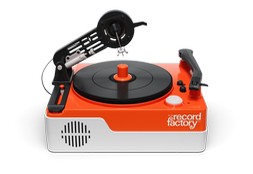The first time Trevor Kraus snuck into a major sporting event, he hid in a giant trash bin for 45 minutes.
A handful of first round games in the 2010 NCAA Men’s Basketball Tournament took place in Buffalo, and Kraus, the loyal Missourian he is, drove up with a friend to see Mizzou play. They won (yay), but while employees attempted to clear the crowd to make way for the next game’s ticket holders, Kraus and his co-conspirator opted to climb into a big (empty) garbage container instead, where they remained until the arena filled up, again. It wasn’t flashy, sure, but hey, sometimes you’ve got to put your ego and personal hygiene aside for the love of the game. After all, what’s a little trash when you have the chance to see Gonzaga play?
“It was not pleasant by any means,” Kraus told me, “but it was exhilarating. My adrenaline was pumping, and I really came to love the feeling not just of gaining access to the games, but of overcoming the odds.”
Since then, Kraus, now 27, has snuck into 23 major sporting events, including Super Bowl XLVI, The Masters, a Wimbledon final and three games during the 2011 World Series (he says he's only failed twice). The “spin move,” as he calls it, has, for Kraus, become its own kind of sport, complete with big risks, nervy play-calling, dumb luck and impassioned determination; without the stats to back it up, I'd say he's probably the best spin-mover there ever was (or at least in the top five). He’s even written a book on the subject, Ticketless, which will be published later this year.
Fortunately for you, though, Kraus has also imparted his decidedly niche wisdom to us. Below, you’ll find some guidelines to perfecting the art of the spin move.
(You don’t have to call it that if you don’t want to.)
Get to the stadium or arena early to look for weaknesses, then strike accordingly.
Kraus likes to have a general knowledge of the stadiums or arenas before he goes, but there’s only so much you can tell from seating charts and images online. He recommends arriving an hour and a half early to the game, so you can take a couple of laps around the stadium, see where the vulnerabilities are and which concourses lead to which staircases. What you’re really looking for is a lack of security presence behind the ticket takers. If there’s not much, it’s far easier to get up to the ticket taker, pretend like you’ve misplaced your ticket and make a break for it. Ideally, there’s a staircase near the entrance where you can escape to the relative safety of the upper deck.
Occasionally, though, the weakness doesn't lie with the ticket takers. While trying to sneak into Camden Indoor Stadium for a Duke-North Carolina basketball game, the standard entrances were either too small or too heavily guarded. Eventually, Kraus found an auxiliary gym, with a tunnel that led to the main gym, waited for the door to open and casually walked in behind a member of the Duke marching band. While sneaking into Game 7 of the World Series in 2011 at Busch Stadium (home of the St. Louis Cardinals), Kraus scouted out an exit door guarded by a single usher. When it was opened by a team executive from the inside, he grabbed it right before it closed and rushed past the usher into the stadium.
Wear several layers.
Once inside, Kraus almost always changes his clothes—most likely, by taking off a sweatshirt or windbreaker—to reveal a shirt that matches the color of the home team, in order to blend in with the crowd.
Don’t get greedy.
“Part of my code,” Kraus says, “is you have to be flexible. You have to just accept having a view of the game.” That means you shouldn’t push your luck by trying to secure the best seats; head to the upper deck, take what you can get (even sold out games will likely have empty seats) and move from section to section periodically, if necessary.
But keep in mind: sneaking in is much easier (and much simpler) than you might think, if you’re somewhat agile and willing to take the risk.
“My theory is that a lot of security presence at North American sporting events is for show, rather than functional,” Kraus explains, noting that security for the World Series at Busch Stadium was no different than it was for regular series games. “A ticket taker who sees me go in without a ticket or a security guard who sees me run [past]...there’s not a whole lot of incentive for them to chase me or report it to their supervisor, because they’re [likely] getting paid part time, and it’s not really a part of their job description to run after the guy who snuck in.”
Beware of spin move karma.
For Kraus, the only quote-unquote “victim” should be the league. He tries not to sit in someone else’s seat, and he certainly doesn’t want to take someone else’s ticket. “I have so much respect for other sports fans, who pay their hard-earned money for tickets,” he says. “That’s sacred. I don’t want to affect their ability to enjoy the game.”
One spin move put this principle in jeopardy. In 2012, for Super Bowl XLVI, between the New York Giants and the New England Patriots, he found an image online of a woman holding up a ticket to the game, which he could zoom in on without losing resolution. He enlisted a friend, an “expert” Photoshopper, to crop the online photo to look like an actual ticket, then glued it to an old baseball ticket in order to approximate the proper thickness. Initially, he planned on using it simply to get to the ticket takers. But when he got up to the ticket taker, and the visible barcode (from the old baseball ticket) didn’t scan, the ticket taker called over a supervisor, who began peeling it apart. Kraus asked him to try scanning the other barcode—the one from the actual ticket in the image he’d found online. To his surprise, it worked, and he made it inside.
Guilty about potentially causing the woman from the photo to miss the game, Kraus told me he later tracked her down and asked her if she got in: miraculously, she did. But Kraus still regrets pulling off the spin move, and says he would never try one like it, again.
Spin moves should be reserved for special games.
According to Kraus, if you can get a ticket for between 50 and 70 bucks, it’s probably not worth trying to sneak in. And if you’re, say, a Cubs fan who has waited his whole life for the Cubs to win the World Series, it’s probably not worth it to try to sneak into a critical game, either, in the off chance you end up experiencing that moment of sweet victory from a holding cell.
The happiness of having snuck into a major sporting event is only real when shared. Or something like that.
Kraus has snuck into plenty of games by himself, but the best spin moves were those he performed with others, like his brother (for a World Series game) or up to four friends (for an Alabama-LSU football game).
“Those were always more special,” he admits, “because we’re all in, we have a meeting point, we meet up, our hearts are pumping, we’re so excited for this game and we have a hug or high five...those moments are what make it great.”
Then, of course, there’s the fact that, having overcome the odds to get in the game, the experience becomes spiritually charged, the way the best sporting events do.
“I’ve gone all out for it, I’ve scouted, I’ve risked an arrest to be here," Kraus recalls, "and now it feels like something magical is going to happen."






